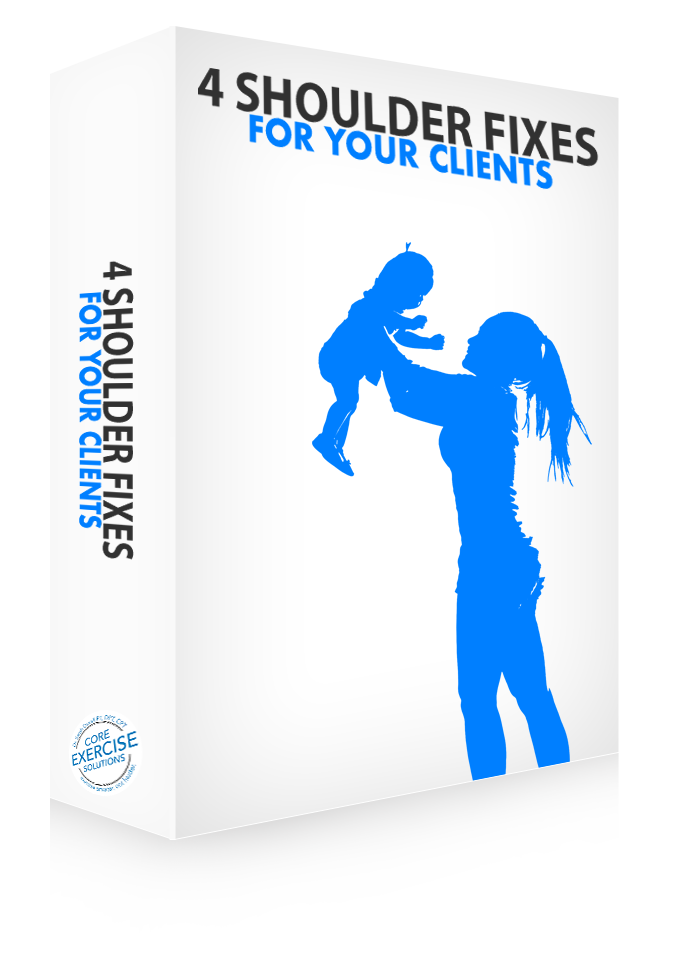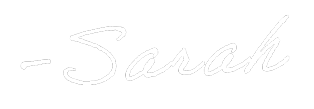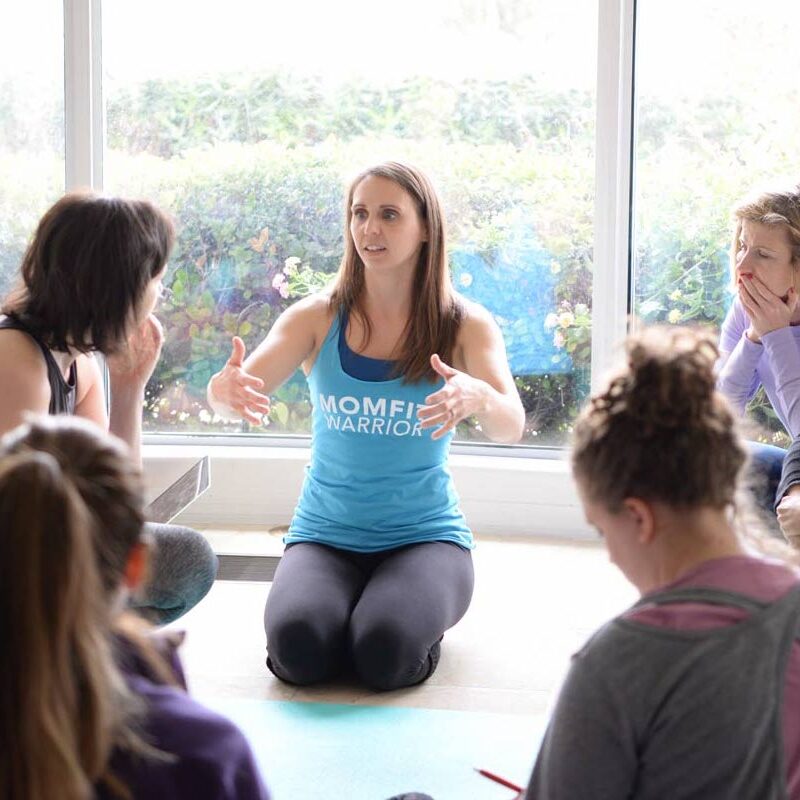
4 SHOULDER FIXES FOR YOUR CLIENTS
Day 1 of 2
Thanks for joining me in this free course! I want to share a few of my favorite videos from the Shoulder Solution CEU course with you so we can start the fun of learning together right now! In this little mini series, we’ll first dive into two important points of education, then in tomorrow's section, we’ll go through two of my favorite exercises. I challenge you to listen to all the details of each exercise and see if you can perfectly execute them and feel all the details that I’m talking about. It’s going to be a fun challenge!
Welcome to Part 1:
Stop Cue "Pull Your Shoulders Down and Back"
In this video, you'll learn:
Video #1 is on why you should stop using the cue “pull your shoulders down and back.” I know, I know. I just developed a few haters from saying that, but it’s true. That cue works well for only the most highly trained, body aware people. Mere mortals tend to overuse their rotator cuff and lats when given that cue. That leads to further overuse and tightness, the complete opposite of what the cue is supposed to help. Let’s dive into this topic together and you can see all the things that go wrong during this demo.
I asked my brother to help me with the filming because he has muscles we can see (main reason) and although I do primarily work with women, it’s easier to see what’s going on without a sports bra in the way. I think we can all agree that topless is not the type of online video viewing that we’re aiming for here. ? Big thanks to my brother for helping out.
Part 2:
Thoracic Mobilization
In this video, you'll learn:
Let's dive into our second video for the day on the upper t-spine stretch. I’d also like to talk for a moment about a flat upper thoracic spine, which is not something people usually consider.
I love this stretch because it gets to that hard-to-reach upper thoracic area. I first saw this stretch from Nick Tumminello about 15 years ago and have used it a great deal since.
The thing I want to point out during this stretch is not as much the stretch itself, but being able to identify when someone has a flat or decreased upper thoracic curve. We often think the only way the thoracic spine can “go wrong” is by having excessive kyphosis, but having a decreased upper thoracic curve is actually quite common. I usually see it in conjunction with overactive rhomboids and underactive serratus and lower traps. Having a decreased curve here can affect optimized breathing as well as neck tightness and the lower thoracic curve.
Have a look at the video and see if you can spy my brother’s decreased upper thoracic curve. And definitely give this stretch a try, it feels great!
Dr. Sarah Ellis Duvall, PT, DPT, CPT, CNC
I taught my first continuing education course in 2007 and it was on the shoulder. Talking about the shoulder feels a bit like coming home. I’ve always loved the arthrokinematics of how the scapula plays on the ribcage and how it supports the shoulder with such little bony support. Fascinating!
On my last clinical rotation for school, my CI asked me to name all the muscles that attach to the scapula before I left for the day. And no cheating with an anatomy book. (Back then we didn’t google things on our phones. ?) It was on that day that I developed a bit of a love affair for the scapula. LOL. I’m such a dork!! But my goal is to pass on that love of learning to you and for us to have a lot of fun in the process. I want you to be able to picture the shoulder complex moving in 3D in your mind so you can easily spot what needs work on the person in front of you.


